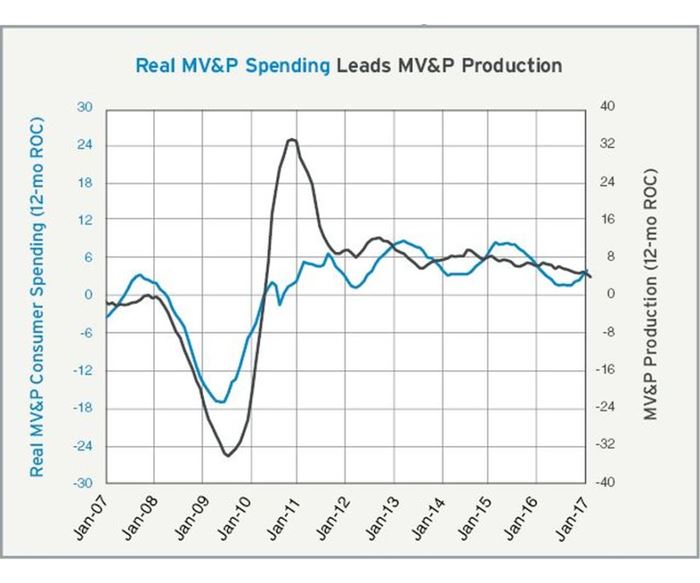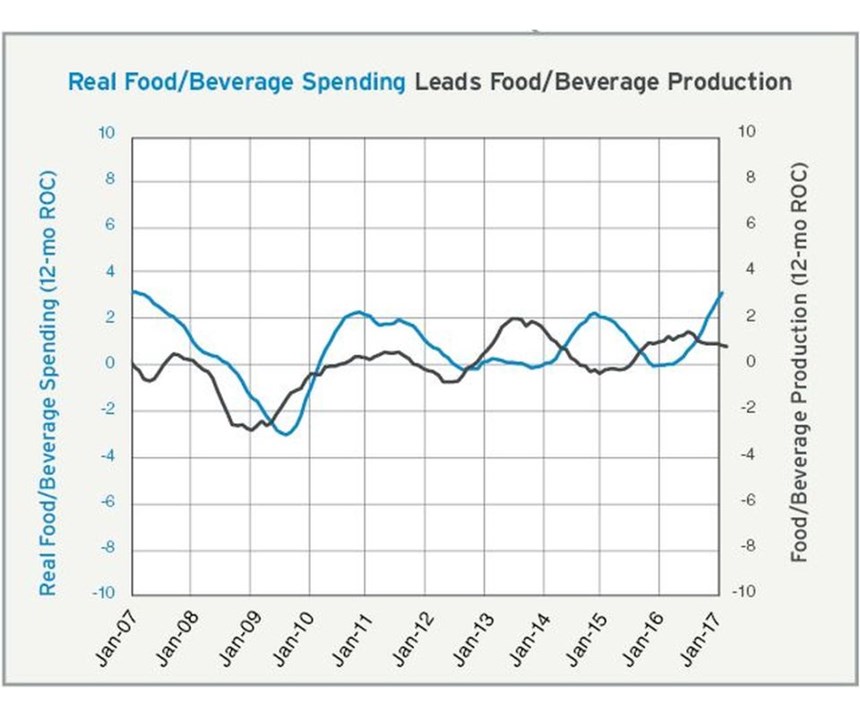Automotive and Packaging
Automotive spending surges, and rapidly growing food/beverage spending also means more packaging.
Automotive Spending Surges 3 of Last 4 Months
The real 10-year treasury rate was 0.92 percent in February, which was a slight decline from the month before and the first month that the rate fell below 1.0 percent since November. It was also the lowest the rate has been since last October. The nominal rate was 242 basis points, which was virtually unchanged from January, but the rate of inflation rose to its fastest rate since February 2012, hitting above 2.5 percent for the second straight month. This increasing inflation is limiting the rise in the real 10-year treasury rate, even though the nominal rate has increased (the real rate is the nominal rate minus inflation). The year-over-year change in the real rate increased to -53 basis points. That was the fourth straight month of an increase and the highest it has been since May 2016.
Over the next few months, the annual rate of growth in consumer spending on motor vehicles and parts should continue to increase, but I expect that the increasing interest rate will begin to slow consumer spending on these items during the summer to fall time frame. The recent spending boom in motor and vehicles and parts has been fueled by loans, particularly subprime loans, as the total amount of vehicle loans is roughly 30 percent above the previous peak level in 2007. Delinquency rates on auto loans, again particularly subprime loans, have been climbing.
While motor vehicle and part production may get a brief boost from the recent surge in consumer spending, I expect that the most likely scenario is for production to continue to grow at a slower rate.
Rapidly Growing Food/Beverage Spending Means More Packaging
Even though real disposable income has grown at a decelerating rate for more than 18 months, real food and beverage spending has accelerated rapidly. Compared with one year earlier, food and beverage spending increased 4.7 percent in January. This rate of growth was nearly three times as fast as the historic average. The last time food and beverage spending grew this fast was December 1999. As a result, the annual rate of change is growing at its fastest rate since February 2007. This should mean an increase in demand for packaging.
Related Content
-
Injection Molds and Integrated Solutions Through Ambition and Innovation
Jordan Robertson, VP, Business Development and Marketing for StackTeck discusses various mold technologies to improve efficiencies in automation, cooling, lightweighting and sustainability.
-
Compact Robotic Palletizer Easily Automates Packaging Process
The Cube cell, complete with a KUKA KR50-R2500 robot, is targeted for small- and medium-sized businesses looking to automate the palletization of their end product.
-
How to Solve Hot Runner Challenges When Molding with Bioresins
A review of the considerations and adaptations required to design hot runners and implement highly productive injection molding operations.
.jpg;maxWidth=970;quality=90)
.JPG;width=70;height=70;mode=crop)














.jpg;maxWidth=300;quality=90)

